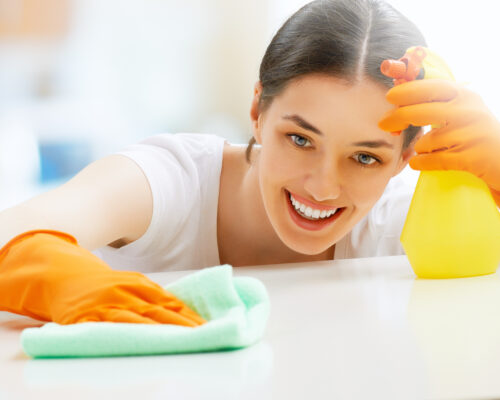When it comes to the transmission of COVID-19, there are many unknowns. We know that person-to-person contact is the most prevalent way for the virus to spread (within about 6 feet). But what about COVID-19 and its interactions with surfaces? Is it conceivable that the coronavirus has taken up residence on your food, shoes, or front door knob?
While it’s true that you’re more likely to receive COVID-19 via intimate contact with other individuals, there’s evidence that the virus may survive on some surfaces for hours or days. This is why it’s critical to ensure that you’re disinfecting, cleaning, and/or sanitising appropriately.
Understanding the Difference Between Disinfecting, Cleaning, and Sanitising
Cleaning, disinfecting, and sanitising are all phrases that are frequently used interchangeably, although they all refer to quite different things in various contexts.
Cleaning is the process of removing germs and dirt from surfaces, which is commonly done using soap and warm water. Germs cannot be killed by cleaning. It just eliminates germs and reduces the likelihood of an illness progressing.
Disinfecting is the process of applying chemicals to destroy bacteria on surfaces. Dirty surfaces are not cleansed, but bacteria are eliminated, reducing the likelihood of viruses spreading on the surface. After disinfection, it is still necessary to clean the area.
Sanitising reduces the number of germs on surfaces or items to a level that is considered safe. Sanitising works by either washing or disinfecting surfaces or items to reduce the likelihood of an infection spreading to others.
What Areas Require Disinfection?
To limit the risk of COVID-19 contamination in non-healthcare contexts such as the home, office, schools, gyms and publicly accessible buildings, faith-based community centres, marketplaces, transportation, and commercial settings or restaurants, good disinfection techniques is essential.
It is recommended that high-touch surfaces in these non-healthcare settings be identified for priority disinfection, such as door handles, kitchen preparation areas, counters, bathrooms (including toilet and tap surfaces), touchscreen personal devices (such as smartphones and tablets), personal computer keyboards, and work surfaces. The most commonly touched surfaces should be a priority for covid cleaning.
What Disinfectants Are Effective Against Covid-19?
In non-healthcare situations, sodium hypochlorite (bleach/chlorine) at a suggested concentration of 0.1 percent or 1,000 parts per million (ppm) is acceptable (1 part of 5 percent strength household bleach to 49 parts of water). Surface disinfection can also be accomplished with alcohol concentrations of 70-90 percent.
Surfaces must first be cleansed with water and soap or a detergent to remove grime and then disinfected after the cleaning process. Cleaning should typically begin with the least soiled (cleanest) area and work its way up to the most soiled (dirtiest) area to avoid spreading dirt to less filthy places than the first.
All disinfectant solutions should be maintained in opaque containers in a well-ventilated, covered location that is not exposed to direct sunlight. They should preferably be produced fresh daily to ensure that they are effective.
The routine use of disinfectants on surfaces by spraying is not suggested for covid cleaning in indoor environments. If disinfectants are to be used, they should be administered using a cloth or wipe that has been soaked in the disinfectant.


























